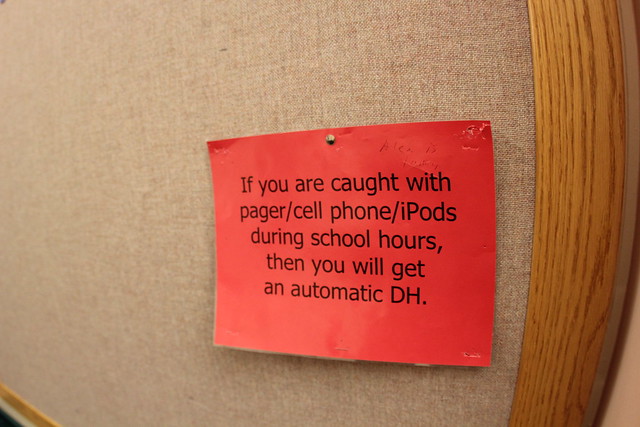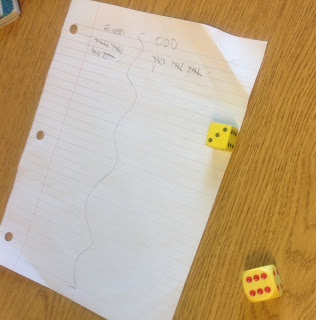CAROLINE ALPHONSO AND ADRIAN MORROW
The Globe and Mail
Published
It seems all eyes are focused on Junior Math in our schools this Fall. Everyone is asking, why are our scores dropping in Math?
For the last several years, the Education Ministry has been encouraging teachers to teach Math through problem-solving using a three-part lesson. This mandate is grounded in research. In our board, like many others, our Elementary teachers have been involved in the CIL-M (Collaborative Inquiry and Learning in Math) meaning they have been learning together, through a co-planning, co-teaching, debriefing model to learn how to teach Math through-problem solving using a 3-part lesson.
So why have the scores been dropping? Over and over again I hear teachers saying "So, when are we going to admit that the 3-part lesson doesn't work?" And I hear parents saying "Teachers need to go back to teaching the basics. They need to teach Math the way I was taught."
Are they right? I've been thinking about this question a lot lately, and I have to say "NO!" The 3-part lesson and teaching through problem-solving WORKS and it is the best method for helping students to develop deep conceptual understanding of mathematical ideas. So, if I am right, why haven't we seen the scores improve in Junior Math on our EQAO Assessments?
I have several theories that might explain why the scores are not improving. I believe that our lack of improvement is actually the result of several factors.
1. Teachers have not fully bought into the 3-part lesson and teaching through problem-solving
- What I have noticed during many of our co-teaching sessions is that teachers have a really difficult time "giving up the floor". The first part of the 3-part lesson, which should be a 15 minute introduction or "Minds On" tends to go on for closer to a half hour of straight teacher talk. This is because old habits are difficult to break and teachers don't fully trust that the learning should and will come out during the third part of the lesson, the Consolidation. They feel that they have to provide students with enough information at the beginning of the lesson for them to be successful in solving the problem during the "Action" portion of the lesson. They run out of time in their lesson, and the Consolidation ends up being only 5 minutes long, if it takes place at all. So while on paper, the plan looks like a 3-part lesson, what is happening in the classroom is much closer to traditional teaching.
- Some teachers see the 3-part lesson and teaching through problem-solving as a "Friday" activity and teach traditional methods during the rest of the week.
- Teachers did not choose to be a part of the CIL-M, they were told to be a part of it. I've asked many people to explain what their "inquiry" in Math is about and they don't even seem to know that they are inquiring about anything. I've also asked "What is the goal of your PD session today?" I've yet to meet a teacher who is a part of the CIL-M who can answer that question. They are attending as a form of compliance not because they are hoping to learn something new. Just like our students can be compliant with a learning task without knowing or understanding the learning goal, so can our teachers!
2. In order for teaching through problem-solving to work effectively, teachers have to be excellent at formative assessment
- In order for teaching through-problem solving to work, the problems have to be in a student's zone of proximal development. This can only happen if the teacher has good assessment for learning practices and knows exactly what his/her students are ready to learn next. The teacher has to differentiate for students at different places on the Math learning continuum.
- Teachers need to be able to determine, through assessment and making learning visible, what students misconceptions are so that they can address them. This leads to very tailored, explicit instruction, but again, requires that the teacher is an expert at formative assessment practices.
3. Teachers have to themselves have an excellent understanding of the Math Curriculum
- Many of our teachers lack confidence in teaching Math. They don't consider themselves experts in Math, and struggle to identify the "Big Ideas". Teachers today were taught Math by traditional methods; many of them only have rote learning of mathematical algorithms, and don't have deep understanding of mathematical concepts. Here is a small example of what I mean: how would you compare 6/7 to 7/8? When I ask teachers this question, they automatically begin to create equivalent fractions using common denominators. That's because they don't truly understand fractions. They should be able to see that each fraction is one piece away from a whole, and the eighths are smaller pieces than the sevenths so 7/8 is the larger fraction.
So what do we need to do about this? Well we need to acknowledge that we have a problem of practice. And saying that we are going to teach Math through problem solving isn't going to truly address that problem. We need to dig deeper, be more specific. What do we have to change about our teaching practice to address this learning deficit in Math?
I think we need to do the following:
- We need to assess our students' mathematical understandings BEFORE we begin a unit of study, but we also need to assess them along the way to determine if we are having an impact. We need to be responsive to our students' needs. In order to do this effectively, teachers need to develop their formative assessment strategies. I like Dylan Wiliam's Embedded Formative Assessment and our Ministry's AER Gains site for professional development on formative assessment.
- We need to develop our questioning strategies to provoke thinking, elicit misconceptions, and scaffold student learning to address misconceptions
- We need to use rich multi-step problems that are open-ended or have multiple paths to a solution; that way students have multiple entry points. Dr. Marian Small's resources help teachers to develop rich problems that address the Big Ideas and common misunderstandings that students have. Here's a PDF that shares Marian's teaching strategies for focusing on the Big Ideas in Math through open tasks.
- We need to explicitly teach accountable talk in the Math classroom using prompts to promote student-to-student discourse and discussion. Cathy Marks Krpan's Math Expressions is a great resource to help teachers develop student thinking and problem solving through communication.
- We need to make Math concrete. Students can't understand the abstract until they understand the concrete. We have to stop saying,"Here are the manipulatives if you need them." No student wants to say they need something others don't. We need to say, "Use these manipulatives to prove your solution." Students who are using an algorithm but don't have conceptual understanding will be forced to explore what the concepts really mean.
Teachers can learn along with their students, but they can also learn with their colleagues through a co-plan, co-teach and debrief model. Teachers need to get together to look at curriculum expectations along side their student needs before they develop problems. Once they know what their students need to learn, together they can develop rich problems or activities for their students. They need to moderate student work together to establish what they now know about what each student knows and can do, and where each student needs to go next in order to achieve the learning goals. We need to be intentional in everything that we do!
But most importantly, teachers need to recognize that every classroom is a laboratory, and every lesson is an experiment. We formulate a hypothesis, "if I teach this concept this way, the children will be able to ...." and like any good scientist, we need to observe the reaction; what are students doing? What are students saying? Then we judge the evidence. Were we effective? What impact did we have on student learning? If we're not effective, we have to create a new hypothesis and determine how to fine tune our teaching to meet the needs of the students in front of us.
But most importantly, teachers need to recognize that every classroom is a laboratory, and every lesson is an experiment. We formulate a hypothesis, "if I teach this concept this way, the children will be able to ...." and like any good scientist, we need to observe the reaction; what are students doing? What are students saying? Then we judge the evidence. Were we effective? What impact did we have on student learning? If we're not effective, we have to create a new hypothesis and determine how to fine tune our teaching to meet the needs of the students in front of us.


































